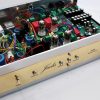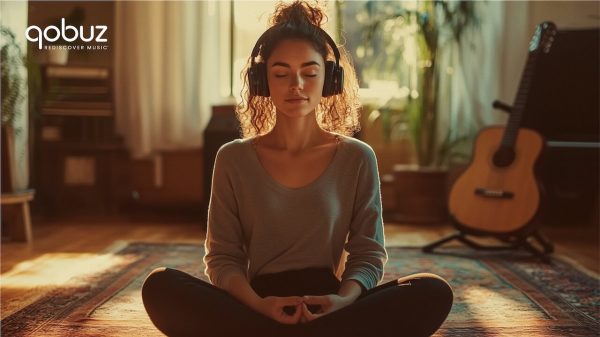Unexpected news rocked the audio world on Monday. Spotify unveiled plans for Spotify HiFi; a new tier of lossless streaming on the platform designed to offer CD-quality sound. Contrary to some media reports, Spotify HiFi will not be offering (unless something changes) hi-res streaming with the new tier; only Qobuz and Tidal currently offer 24-bit/96kHz or higher resolution versions of music on their respective platforms. The announcement, however, sent shockwaves through the world of high-end audio and for good reason. Tidal and Qobuz have done well penetrating the audiophile community around the globe, but Spotify is the King Kong of streaming.
Spotify celebrates its 10th anniversary in the United States this summer, and while it has solidly beaten the competition in terms of market share, it has not ventured into the world of CD-quality audio. Until now.

As someone just beginning her audiophile journey and 10 years deep into a Spotify subscription, this announcement presented a lot of interesting things for me to think about regarding the future of streaming.
I started my Spotify subscription in mid-2012. I was in college at the time and found my place in a student organization that produced live music events on campus here in Texas. I distinctly remember my friends getting very excited about this new service called Spotify. It didn’t take long for it to catch on with all of us at a major U.S. college; when I look at my oldest playlists on the platform, they are all collaborative playlists we put together. Spotify has been my sole source for streaming ever since.

Fast forward to 2021, and I’m on a new journey to discover better audio quality. With streaming, that journey really began just a couple of weeks ago when I started a free trial of Qobuz. The first album I pulled up was John Coltrane’s Ballads. I pressed play using the Qobuz platform on my MacBook Pro and was instantly surprised. Coltrane’s sax coming from the left, Elvin Jones’ soft hi-hat on the right, and McCoy Tyner’s piano was dead center in front of me.
I was genuinely stunned by the sound quality. I could not believe that music could sound like that coming out of my laptop.
I opened up Spotify to compare, and found there was no comparison. I simply could not hear the same level of detail, clarity, or any of the spatial information (soundstage depth and width) on Spotify that I could on Qobuz. In many ways, it reminded me of the first time I heard my current stereo system. I had unlocked a whole new understanding of what my listening experience could be.
How do people not know about this? No wonder audiophiles get all crazy when people say that listening to Spotify is “good enough.”
Vinyl will always be my favorite format, but there is something to be said about the superiority of Qobuz over Spotify in the sound quality department. The vast majority of Spotify customers have clearly never heard the differences between the two platforms and just how good streaming can sound.
What’s so special about the audiophile streaming service that costs $19.95 per month?
There is much that I have enjoyed about Qobuz in a short amount of time. The interface is clean, beautiful, and intuitive. I’m impressed by the content within the platform; it contains articles called “panoramas” covering a wide range of artists, albums, and labels that provide an easy way to learn more about music. Perhaps my favorite feature though is the “credits.” While listening to one of my favorite new releases, Good Woman by The Staves, I could see, on a track-by-track basis, the engineer, mixer, producers, composers, and instrumentalists. It’s a level of detail that I am used to finding only from a physical release like a record or CD. Who knew that all of this was available on a streaming platform?

My initial reaction to Qobuz is that I would want to continue with it after my trial ends. It would be hard to give up the level of sound quality that it provides. However, I still don’t think I could ever give up my Spotify subscription. Why? The biggest reason is that their algorithm knows me too well.
The “Made For You” section with its Discovery Weekly and Release Radar playlists delivers music, both new and old, every week that is curated to my taste with a scary amount of precision. Within the last year, I’ve also started utilizing more of their playlists that include podcasts like the Daily Drive and Daily Wellness. The amount of curated content that is at my fingertips can honestly be overwhelming at times, in the best way possible.
The social aspect is also really important to me. I can get real time recommendations from my friends, and am always paying attention to what they are listening to in the activity bar. Most third-party playlists I encounter utilize Spotify. It is simply the easiest way to stay connected and access content that is valuable to me.
All of that money invested in the algorithm has paid off for the platform. Spotify has 345 million monthly active users; as of the third quarter of 2020, Spotify had 155 million premium subscribers worldwide, up from 113 million in the corresponding quarter of 2019.
Tidal and Qobuz are never going to approach those numbers; Spotify also announced that it is expanding its streaming services into an additional 85 markets in 2021 – making it available in 175 countries in 36 languages.
I’ve never used Tidal, but I’m not sure that I would need to considering how impressive Qobuz has proven to be so far.
So why is all of this so important for Spotify users and the high-end audio industry?
I think the announcement of Spotify HiFi brings to light the importance of educating more people about better sound quality.
Existing hi-res streaming platforms do not seem to be targeting younger listeners. I had never heard of Qobuz until my brilliant Editor-in-Chief told me about it a month ago. Had I known about Qobuz or Tidal earlier, I would have started a trial subscription just to experience the difference in sound quality. I was stunned when he told me that he has over 3,200 albums already saved on both platforms and that he listens to both using Roon (another topic).
Spotify’s decision to bring in Billie Eilish to promote HiFi is brilliant in my opinion. It should help educate and expose a whole new generation of listeners to the possibilities of better sound quality. In a two-minute promo video, Eilish and her producer brother, FINNEAS explained how important it is to them for the listener to hear every part of the music they create. They talk about how much time they spend working on their tracks, layering them with all kinds of interesting sounds.
This discussion really struck me, because as an intense listener, I desperately want to hear those layers too. The thing is, I don’t know how many people know what they are potentially missing, and how easy it is to improve what they hear.
My guess is that it’s a huge number of people. Tens of millions who have grown up listening to earbuds and smart loudspeakers that don’t sound very good.
Spotify HiFi could be a major contributor to increased interest in sound quality for a lot of people. Limiting factors will most certainly be price and the actual audio quality, both of which are currently TBD. Coupling services like Spotify HiFi with affordable and transportable dongle DACs, means that higher quality streaming is easier to obtain than ever before.
I think to reach the tipping point of greater adoption you have to begin with more widespread education, and that education is something that all of us here plan to be a part of. With the rollout of lossless audio, Spotify will be taking a huge leap forward in sound quality and that has to be great news for audio manufacturers.
This long-time user is very excited to see how this move will affect the future of high quality streaming and grow a new generation of audio enthusiasts.




















































Lance
March 2, 2021 at 11:13 pm
Thanks for the information Lauren 👍